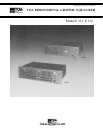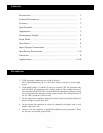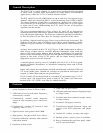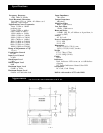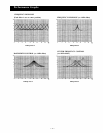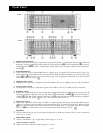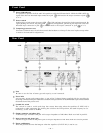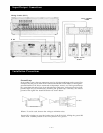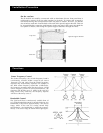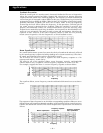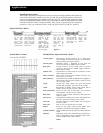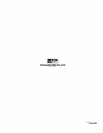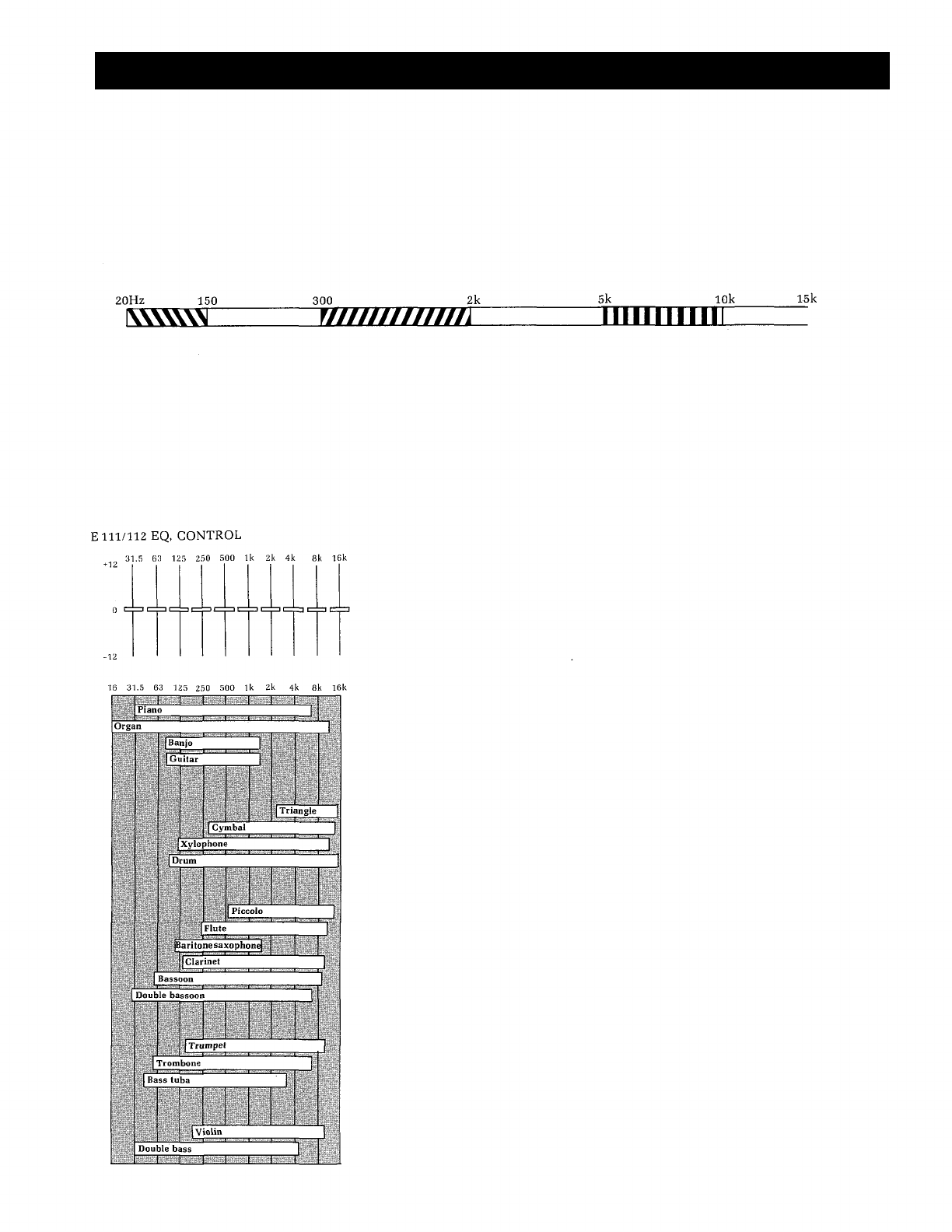
Equalization for music
The Graphic Equalizer is designed not only for use in preventing feedback and equalizing
uneven room frequency response to be flat, but also for equalizing frequency response to
your tastes and producing favourable sound for you. Fig. 1 shows each frequency band
and its corresponding auditory feeling. Fig. 2 and Table 1 show the relation between each
musical instrument and its frequency band. They can be of great help in the equalizer
operation. (They are referenced from a book entitled "Practical Guide for concert")
EQUALIZATION CHART
These sounds
are felt more
than really
heard. They
give a sense of
power. Too
much produces
a muddy sound.
The rythm section
appears here. Either
a fat or thin sound
can be heard by
mis-EQ here. Too
much becomes
boomy. Bass guitar-
Snare-Toms.
Probably the most Upper vocal re- Presence range. Sibilance levels
important of all.
Most all instru-
ments contain
harmonics here.
300Hz boosting can
cause horn-like
sounds. 1k to 2k
sounds tinny. Too
much here sounds
like the telephone.
gion. Too much
here will cause
great fatigue, and
loose speech in-
telligence. Re-
ducing 3k can
bring vocals on
top.
Figure 1
Great achievement
in overall level can
be had here. Too
little causes a "far
away" sound.
can be
con-
trolled here.
Bright, clean
definition.
INSTRUMENT CHART
INSTRUMENT EQUALIZATION CHART
Acoustic guitar
Electric guitar
Bass guitar
Human voice
Piano (Acoustic)
Piano (Electric)
Organ
Violin
Brass instruments
Bass drum
Snare drum
Tom Tom
Floor Tom
Hi Hat
Cymbal overhead
Talk Box
Bass strings resonate between 70 to 120Hz, body
around 300Hz. Avoid boosting these to stop feedback.
3kHz and 5kHz gives great "clarity".
Resonances differ — depending on type. Good full
sounds around 300 to 500Hz. Clarity at 3kHz.
Extreme lows are at 60 to 90Hz. "Pick" or "pluck"
sounds are around 800 to 1200Hz. Upper harmonics
clarified about 3kHz.
Good fullness at 150Hz. Watch for "boominess" around
250Hz. Mid-range 10kHz.
Bass strings resonate around 100Hz. Watch for sub-
harmonics at 30 to 50Hz.
Good mid-clarity at 3kHz to 5kHz thins out rapidly in
high end. Be careful around 1.5kHz to 2.5kHz to avoid
the "bar room sound".
Usually dies under 200Hz. Has great mid-sounds
around 1200 to 2000Hz. Top end cuts off at 6kHz.
Richfullness at 400Hz. Natural mids around 1500 to
2500Hz. Avoid "scratch" sounds at 8kHz.
Watch for "hot" mids around 2kHz. Low end boost
around 400Hz. Top end clarity at 6kHz.
Great low "kick" at 40Hz. The mids at 2kHz gives the
familiar "punch".
Good fullness at 100Hz. The "crack" is boosted at 2kHz.
real easy. The snares extend to above 4kHz.
The main fullness is around 200Hz. The mid punch
extends to 4kHz.
Same as tom, but extends down to 80Hz.
Watch for the "gong" sound around 300Hz. Good
"shimmer" sounds are around 8kHz to 10kHz.
About the same as hi-hat only has more low end around
150Hz.
Depending on the guitar sound driving it and the reso-
nance of each player's mouth, should have great "bite"
around 1200Hz and dies above 6kHz.
Table 1
Figure 2
— 10 —
Applications



